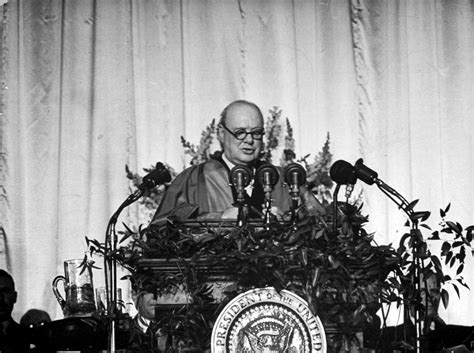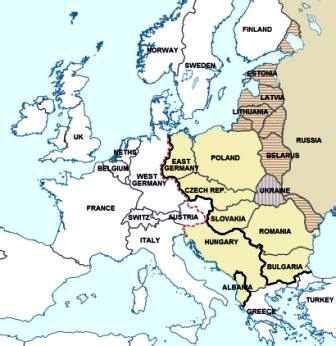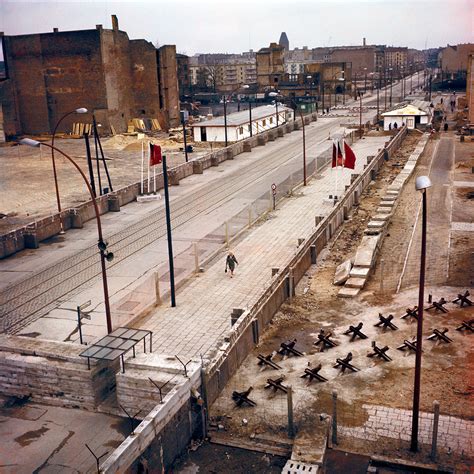Iron Curtain Definition

The Iron Curtain was a term used to describe the physical and ideological boundary that separated Western Europe from the Soviet-controlled Eastern Bloc during the Cold War. The term was first coined by Winston Churchill in a speech he delivered in Fulton, Missouri, on March 5, 1946, in which he warned of the dangers of Soviet expansionism in Europe. The Iron Curtain was characterized by a series of physical barriers, including the Berlin Wall, which divided East and West Berlin, and the inner German border, which separated East and West Germany.
The Iron Curtain was not just a physical barrier, but also an ideological one. It represented the division between the capitalist West and the communist East, and the restrictions on travel, communication, and trade that existed between the two blocs. The Soviet Union and its Eastern European allies imposed strict controls on their citizens, limiting their ability to travel, access information, and express themselves freely. The Iron Curtain also represented the fear of communism that existed in the West, and the efforts of Western governments to prevent the spread of communism in Europe.
Key Points
- The Iron Curtain was a physical and ideological boundary that separated Western Europe from the Soviet-controlled Eastern Bloc during the Cold War.
- The term was first coined by Winston Churchill in a speech he delivered in Fulton, Missouri, on March 5, 1946.
- The Iron Curtain was characterized by physical barriers, including the Berlin Wall and the inner German border.
- The Iron Curtain represented the division between the capitalist West and the communist East, and the restrictions on travel, communication, and trade that existed between the two blocs.
- The Soviet Union and its Eastern European allies imposed strict controls on their citizens, limiting their ability to travel, access information, and express themselves freely.
History of the Iron Curtain

The history of the Iron Curtain dates back to the end of World War II, when the Soviet Union emerged as a dominant power in Eastern Europe. The Soviet Union had suffered heavily during the war, and Stalin was determined to create a buffer zone of socialist states in Eastern Europe to protect the Soviet Union from future attacks. The Soviet Union began to exert its influence over Eastern Europe, and by the late 1940s, it had established a network of communist governments in the region.
The Iron Curtain was formalized in 1949, when the Soviet Union created the Eastern European socialist bloc, which included Poland, Czechoslovakia, East Germany, Hungary, Romania, and Bulgaria. The Soviet Union also created the Warsaw Pact, a military alliance of Eastern European socialist states, to counter the North Atlantic Treaty Organization (NATO), a military alliance of Western European states.
Physical Barriers
The physical barriers of the Iron Curtain were designed to prevent people from escaping from the Eastern Bloc to the West. The most famous of these barriers was the Berlin Wall, which was erected in 1961 to separate East and West Berlin. The wall was guarded by soldiers and police, and anyone who attempted to cross it was shot. The inner German border, which separated East and West Germany, was also heavily guarded, and it was lined with watchtowers, barbed wire, and minefields.
| Physical Barrier | Description |
|---|---|
| Berlin Wall | A wall that separated East and West Berlin, guarded by soldiers and police. |
| Inner German Border | A border that separated East and West Germany, lined with watchtowers, barbed wire, and minefields. |

Fall of the Iron Curtain

The Iron Curtain began to crumble in the late 1980s, as the Soviet Union’s grip on Eastern Europe began to weaken. In 1989, a wave of protests swept across Eastern Europe, and the Soviet Union was unable to suppress them. The Berlin Wall was torn down on November 9, 1989, and the inner German border was opened. The Soviet Union itself collapsed in 1991, and the Eastern European socialist bloc was dismantled.
The fall of the Iron Curtain marked the end of the Cold War and the beginning of a new era of international relations. It also marked the beginning of a new era of globalization, as the division between the capitalist West and the communist East was bridged, and trade and communication between the two blocs increased.
What was the Iron Curtain?
+The Iron Curtain was a physical and ideological boundary that separated Western Europe from the Soviet-controlled Eastern Bloc during the Cold War.
When was the term "Iron Curtain" first coined?
+The term "Iron Curtain" was first coined by Winston Churchill in a speech he delivered in Fulton, Missouri, on March 5, 1946.
What were the physical barriers of the Iron Curtain?
+The physical barriers of the Iron Curtain included the Berlin Wall and the inner German border, which were designed to prevent people from escaping from the Eastern Bloc to the West.
Meta description suggestion: “Discover the history and significance of the Iron Curtain, a physical and ideological boundary that separated Western Europe from the Soviet-controlled Eastern Bloc during the Cold War.”